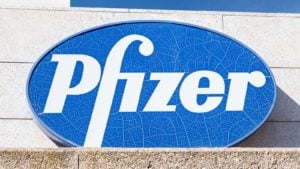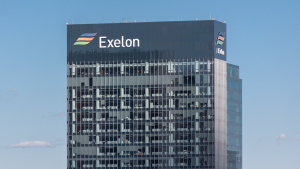
Warren Buffett stocks can teach you a thing or two about investing. Warren Buffett’s annual shareholders letter to Berkshire Hathaway (NYSE:BRK-A)(NYSE:BRK-B) investors outlines what he’s done the past year and often why. Along the way, he drops pearls of wisdom and golden nuggets of investing truths.
Yet it’s not so much what Buffett says but what he does. As a super investor he doesn’t have to play by the same rules as you and me. The SEC affords him and other billionaires special privileges they withhold from us. For example, Buffett doesn’t always have to divulge his big bets to ensure he gets the best price.
However, Buffett also has a secret stash that not many investors are familiar with. Berkshire Hathaway acquired specialty investment company New England Asset Management (NEAM) when it bought General Re in 1998. It’s a “secret” portfolio with numerous hidden gems, companies that don’t always appear in Berkshire Hathaway’s portfolio. While Buffett doesn’t actively manage the investment portfolio as he does with his primary vehicle, Berkshire still effectively owns its assets.
NEAM recently purchased the following three Warren Buffett stocks, hiding in plain sight.
Pfizer (PFE)

It’s no secret Buffett likes a bargain and stocks trading at a discount to their intrinsic value. Pharmaceutical giant Pfizer (NYSE:PFE) fits the bill as its stock trades 32% below where it stood a year ago and regularly tests new lows. PFE stock recently touched a level it hadn’t seen in a decade.
The loss of revenue from its Covid therapeutics is sinking the company. It generated $52 billion in sales from those shots in 2022 but only $12.7 billion last year. It hopes to see $8 billion worth this year.
What’s worse is that the pharma stock has a handful of therapies generating over $1 billion a year in revenue. Yet, almost all have suffered significant sales declines or posted anemic growth. Eliquis and Prevnar, for example, were up 4% and 2%, respectively; Xeljanz and Enbrel were off 5% and 17%, respectively; revenue from oncology treatments Ibrance and Xtandi fell 7% and 1%, respectively.
Although some therapies grew by double-digit rates, the overall effect was a 42% decline in sales in 2023. Yet the stock is cheap. It trades at only 10 times next year’s earnings, which are expected to grow by 23%. As it pursues a growth-by-acquisition strategy to bolster its drug pipeline, PFE stock was just too cheap for NEAM to ignore.
Amgen (AMGN)

Biotech behemoth Amgen (NASDAQ:AMGN) has some of the same issues as Pfizer though to a lesser degree. Its growth trajectory last year wasn’t all that spectacular once you removed the impact of acquisitions it made. The results disappointed investors. AMGN shares are down 4% this year but 20% higher over the last 12 months.
The biotech’s own portfolio of billion-dollar drugs did grow year over year, though not as quickly as some hoped. Yet Amgen has a robust pipeline of therapies that will be key in defending its portfolio from biosimilars even as it pursues it’s own development of biosimilar drugs.
Amgen also has a solid presence internationally in its core therapeutic circle of competency. New acquisitions strengthen its ability to identify potential new drug targets. Recently launched branded and biosimilar drugs should allow the biotech to maintain its strong record of returning value to shareholders.
With Amgen stock trading at 13 times next year’s earnings and 20 times its free cash flow, NEAM saw this as an opportunity to add to its position.
Exelon (EXC)

Electric utility Exelon (NYSE:EXC) is another beaten down stock, though nowhere near Pfizer or Amgen. EXC stock is up 2% in 2024. This is a new addition to the New England Asset Management portfolio though. It purchased 133,650 shares that have a value of $4.8 million, or less than 1% of the portfolio’s total. This could be a base on which to build.
The utility provides gas and electricity to 10 million customers on the east coast and plans on spending some $35 billion in capital expenditures over the next four years. It saw revenue in the fourth quarter rise 15% to $5.4 billion as higher utility rates went into effect.
Inflation and higher interest rates pressure Exelon’s performance, as they do most capital-intensive businesses. Although the Federal Reserve didn’t cut rates at its latest meeting it did indicate rate cuts were coming later this year, which helped lift the utility sector. EXC stock is up more than 10% from its February lows.
Exelon’s dividend yields 4% annually and is well supported. The regulated utility offers good growth prospects and stable cash flows for investors.
On the date of publication, Rich Duprey did not hold (either directly or indirectly) any positions in the securities mentioned in this article. The opinions expressed in this article are those of the writer, subject to the InvestorPlace.com Publishing Guidelines.






